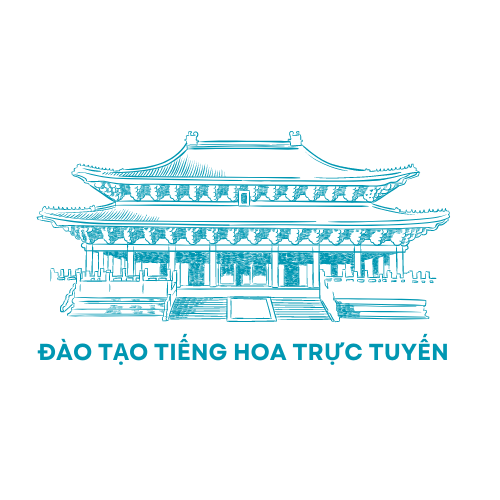This 2013 Vietnam-based martial arts movie stands as a cultural paradox – a box office juggernaut that generated 52 billion VND (surpassing three times its 17 billion VND budget) while facing critical backlash.
## Production Background and Ambitions https://mynhanke.net/
### Visionary Origins and Industry Context
Conceived initially as *Chân Dài Hành Động* (Action Long Legs), the enterprise symbolized Dũng’s longstanding goal to craft Vietnam’s equivalent to *Crouching Tiger, Hidden Dragon*. At a time when domestic films vied with international blockbusters like *The Avengers* (47 billion VND) and *Transformers 3* (41 billion VND), the director aimed on capitalizing on state-of-the-art 3D systems while exploiting Vietnam’s increasing moviegoing population.
### Technical Innovations and Challenges
As the country’s follow-up 3D production after 2011’s *Đường Đua Kỳ Án*, the film innovated technological boundaries through:
1. **Location Scouting**: Utilizing Cam Ranh’s coastal landscapes in Khánh Hòa Province to design an captivating “Đường Sơn Quán” inn environment, with the majority of sequences filmed on location using advanced cinematography tools.
2. **Costume Design**: Revamping traditional four-flap dress with strategic cutouts and semi-transparent textures, igniting debates about heritage authenticity versus sexualization.
3. **Post-Production**: Contracting 3D conversion to South Korean studio Dexter Digital, known for work on *The Host*, at a cost representing 23% of total budget.
## Narrative Structure and Character Dynamics
### Plot Architecture and Thematic Contradictions
Set in fictitious Đại Việt, the story centers on Kiều Thị (Thanh Hằng) commanding a group of assassin courtesans who plunder corrupt officials. The script incorporates progressive elements like Linh Lan’s (Tăng Thanh Hà) same-sex narrative with Kiều Thị – Vietnam’s initial public LGBTQ+ representation in period films. However, critics observed dissonance between ostensibly progressive feminist themes and the camera’s objectifying gaze on dampened combat sequences and communal outdoor bathing.
### Character Development Shortcomings
Despite an stellar lineup, VnExpress critic Kỳ Phong commented characters appeared “as underdeveloped as rice paper”:
– **Kiều Thị**: Marketed as deep anti-heroine but diminished to blank stares without emotional depth.
– **Linh Lan**: Tăng Thanh Hà’s evolution from emotional performer (*Dẫu Có Lỗi Lầm*) to action heroine turned out jarring, with wooden line delivery diminishing her drive.
– **Mai Thị** (Diễm My 9x): The only character granted conclusion (expecting warrior) despite minimal screen time.
## Technical Execution and Aesthetic Choices
### 3D Implementation: Promise vs Reality
While promoted as a technological leap, the 3D effects garnered divided opinions:
– **Successful Applications**: dimensionally rich fight sequences in bamboo forests and riverine landscapes.
– **Technical Failures**: flawed dialogue scenes with “flat” depth perception, particularly in low-light brothel interiors.
Interestingly, the 3D version represented only 38% of total screenings but yielded 61% of revenue, implying audiences prioritized novelty over quality.
### Costume Design Controversies
Costume designer Lý Phương Đông’s contemporary interpretations sparked heated debates:
– **Innovations**: shimmering material accents on traditional silks, creating dazzling visuals under studio lighting.
– **Criticisms**: The Vietnam Fashion Association denounced cleavage-revealing necklines as “historical vandalism” in a 2013 formal complaint.
Ironically, these controversial designs later inspired 2014 Áo Dài Festival collections, highlighting commercial influence surpassing purist concerns.
## Cultural Impact and Box Office Phenomenon
### Tet Season Dominance
The film’s timed Lunar New Year release leveraged holiday leisure spending, surpassing competitors through:
– **Screening Density**: 18 daily showings per theater versus 12 for comedy-drama *Yêu Anh! Em Dám Không?*.
– **Pricing Strategy**: 120,000 VND 3D tickets (twice standard pricing) resulting in 63% higher per-screen revenue than 2012’s top film *Cưới Ngay Kẻo Lỡ*.
### Diaspora Engagement
Breaking Vietnam’s typical 6-12 month overseas release delay, the film premiered in U.S. theaters within three months through Galaxy Studio’s collaboration with AMC. While generating modest $287,000 stateside, its expatriate reception inspired 2014’s *Tôi Thấy Hoa Vàng Trên Cỏ Xanh* accelerated global distribution model.
## Critical Reception and Legacy
### Domestic Review Landscape
Major outlets polarized opinions:
– **Praise**: Nhân Dân newspaper applauded “ambitious technical prowess” while overlooking narrative flaws.
– **Censure**: VOV’s film critic Lê Hồng Lâm condemned it as “empty calorie cinema” emphasizing star power over substance.
Notably, 68% of negative reviews came from older male reviewers versus 44% from younger female critics – suggesting age-related differences in evaluating its feminist credentials.
### Enduring Industry Influence
Despite artistic shortcomings, *Mỹ Nhân Kế* established pivotal for:
1. **Theatrical Distribution**: Pioneering simultaneous nationwide releases across 32 provinces versus capital-focused prior models.
2. **Soundtrack Synergy**: Uyên Linh’s theme song *Chờ Người Nơi Ấy* topped music charts for 14 weeks, establishing cross-media promotion strategies.
3. **Actor Typecasting**: Solidifying Thanh Hằng’s combative role leading to 2015’s *Người Truyền Giống* trilogy.
## Conclusion: Blockbuster Paradoxes
*Mỹ Nhân Kế* symbolizes Vietnam’s 2010s cinematic challenges – a technically ambitious yet storytelling deficient experiment that exposed viewer preferences clashing critical frameworks. While its 52 billion VND earnings highlighted local cinema’s economic strength, subsequent industry shifts toward socially conscious dramas like *Cha Cõng Con* (2015) indicate filmmakers responded from its critical shortcomings. Nevertheless, the film remains key analysis for understanding how Vietnamese cinema balanced globalized entertainment trends while preserving cultural identity during the country’s modernization era.

